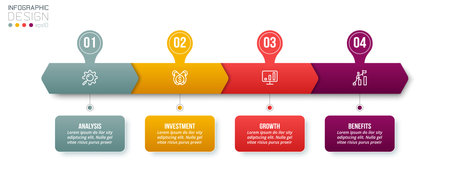1. Introduction: Passive Investment Trends in the UK
Over the past decade, passive investment strategies have experienced significant growth within the UK financial landscape, fundamentally reshaping how both institutional and retail investors allocate capital. This evolution has been driven by a combination of cost pressures, increased regulatory scrutiny, and a growing body of evidence supporting the long-term performance of index-tracking funds relative to active management. As assets under management in passive vehicles—such as ETFs and index mutual funds—have soared to record levels, scrutiny has intensified on the metrics that define their effectiveness, most notably tracking error and benchmark selection. In the context of the UK market, these considerations are particularly salient given the unique characteristics of local indices, sector concentrations, and regulatory requirements such as MiFID II. The importance of minimising tracking error while ensuring accurate and relevant benchmark selection is not merely an academic exercise; it is central to delivering value for end-investors and maintaining confidence in passive products amid a rapidly evolving market environment.
2. Defining Tracking Error in a British Context
Tracking error is a crucial performance metric for passive investors, particularly within the UK market, where regional nuances and benchmark selection significantly influence investment outcomes. In essence, tracking error quantifies the divergence between the returns of a portfolio—typically an index fund or ETF—and its chosen benchmark. For UK-based investors, understanding and managing tracking error is vital, as it serves not only as a measure of how faithfully a fund replicates its benchmark but also as an indicator of potential risks stemming from local market factors, currency effects, and regulatory constraints.
Explanation of Tracking Error
In the British context, tracking error is generally calculated as the standard deviation of the difference in returns between the investment fund and its respective benchmark over a specified period. This statistical approach offers investors insight into both systematic and unsystematic risks that can arise from imperfect replication methods or operational inefficiencies.
Key Methods to Measure Tracking Error
| Method | Description | Typical Use in the UK |
|---|---|---|
| Standard Deviation Approach | Calculates the standard deviation of excess returns (fund return minus benchmark return) | Most widely used by UK fund managers and regulators; aligns with FCA disclosure standards |
| Absolute Difference Approach | Averages the absolute differences between periodic fund and benchmark returns | Used for simpler performance reports or when engaging retail investors in plain English disclosures |
| Ex Post vs Ex Ante | Ex post uses historical data; ex ante relies on forecasts or models based on expected volatility and portfolio composition | Ex post analysis dominates regulatory reporting; ex ante useful for risk management and future planning by institutional investors |
Relevance to UK Regional Indices
The relevance of tracking error becomes especially pronounced when considering regional benchmarks such as the FTSE 100, FTSE 250, or All-Share Index. Each index has distinct characteristics regarding sector weightings, liquidity, and constituent turnover. For example, funds tracking the FTSE 100 must contend with significant concentration in sectors like financials and energy—a dynamic that can amplify tracking error if not managed properly. Similarly, smaller indices like the FTSE SmallCap introduce greater idiosyncratic risk due to less liquidity and higher stock-specific volatility.
Implications for UK-Based Investors
For British investors, low tracking error signals efficient index replication and minimised active risk. However, it’s important to recognise that some level of tracking error is inevitable due to transaction costs, management fees, dividend reinvestment policies, and tax considerations unique to the UK market. Consequently, analysing both the magnitude and sources of tracking error enables investors to make informed choices when selecting index funds or ETFs tailored to their specific objectives within the British investment landscape.

3. Selecting Appropriate Benchmarks: Navigating the UK Landscape
The selection of an appropriate benchmark is a critical step for passive investment strategies, particularly in the nuanced context of the UK financial market. Unlike markets with a dominant single index, the UK offers a range of well-established benchmarks, each reflecting different facets of market performance. The FTSE 100, representing the largest 100 companies listed on the London Stock Exchange by market capitalisation, is often viewed as the flagship index for UK equities. However, its heavy weighting towards multinational corporations and concentration in sectors such as financials and energy can present limitations when measuring true domestic market performance.
Alternatively, the FTSE All-Share Index provides broader exposure by encompassing around 600 companies, covering approximately 98% of the UK’s market capitalisation. This wider coverage offers investors a more comprehensive view of the local equity landscape and mitigates some sector biases found in narrower indices. Nonetheless, this breadth introduces its own set of challenges, including increased exposure to mid- and small-cap stocks, which may exhibit higher volatility and lower liquidity relative to large caps.
Benchmark Selection Challenges
Passive managers operating in the UK face a unique dilemma when choosing between these indices. The decision involves balancing representativeness with investability. For institutional investors such as pension funds, alignment with regulatory requirements—like those outlined by The Pensions Regulator—adds another layer of complexity to benchmark selection. Moreover, many popular benchmarks are constructed based on free float-adjusted market capitalisation, which can result in underrepresentation of certain sectors or rapidly growing companies that have not yet reached significant size.
Impact of Local Market Characteristics
The structure and composition of the UK market further complicate benchmark selection. With a high proportion of international revenues among FTSE-listed firms, especially within the FTSE 100, global macroeconomic factors often exert greater influence on index returns than purely domestic events. As a result, tracking error calculations can be skewed if the selected benchmark does not accurately reflect an investor’s target universe or risk profile.
Navigating Benchmark Nuances
To address these challenges, asset managers increasingly consider custom benchmarks or blended indices that better capture their specific investment mandate and client objectives. The use of sub-indices focused on smaller caps or sector-specific exposures is also gaining traction among UK investors seeking to tailor risk-return profiles more precisely. Ultimately, successful passive investment in the UK hinges on rigorous benchmark due diligence and ongoing assessment to ensure alignment with both market realities and investor expectations.
4. Unique UK Market Factors Influencing Passive Strategies
Passive investment strategies in the UK are shaped by a distinctive set of market variables, each directly impacting tracking error and benchmark selection. Understanding these unique factors is crucial for asset managers and investors seeking to minimise deviation from their chosen indices while maintaining effective exposure to the UK market.
Sector Concentration in the FTSE Indices
The UK equity market, particularly as represented by indices such as the FTSE 100 and FTSE All-Share, exhibits significant sector concentration. A handful of sectors—especially Financials, Energy, and Consumer Staples—dominate index weightings. This concentration can amplify idiosyncratic risk and increase tracking error if a passive fund’s holdings or rebalancing practices do not perfectly mirror those of the benchmark.
| Sector | FTSE 100 Weight (%) | Potential Tracking Error Impact |
|---|---|---|
| Financials | ~20% | High (if under/overweight) |
| Energy | ~12% | Moderate–High |
| Consumer Staples | ~17% | Moderate |
| Technology | <2% | Low (but rising relevance) |
Sterling Volatility and Currency Effects
The value of sterling has experienced considerable volatility since the Brexit referendum, and this has direct implications for passive strategies tracking indices with international constituents or revenues. Funds domiciled in the UK but exposed to overseas earnings must decide whether to hedge currency risk or accept the resultant tracking error versus unhedged benchmarks. The choice of benchmark currency denomination can thus significantly influence both performance attribution and perceived manager skill.
Regulatory Shifts: FCA and ESG Mandates
The Financial Conduct Authority (FCA) has introduced evolving requirements around transparency, cost disclosure, and sustainable investment practices. Notably, environmental, social, and governance (ESG) integration is becoming mandatory for many pension schemes and institutional investors. These changes can necessitate custom benchmarks or exclusions, potentially increasing tracking error if standard indices do not align with regulatory or client-imposed constraints.
| Regulatory Factor | Description | Tactical Impact on Passive Funds |
|---|---|---|
| FCA Transparency Rules | More detailed reporting on costs and holdings required | May limit use of optimisation techniques to reduce costs, raising tracking error risk |
| ESG Integration Mandates | Pension funds required to consider ESG factors in portfolios | Exclusions or tilts may diverge from standard benchmarks, increasing tracking error |
| Pension Scheme Regulation Changes | Tighter controls on illiquid assets and default fund designations | Affects benchmark eligibility; may require creation of new composite indices with limited history/data |
Summary: The Challenge of Adaptation in a Dynamic Market Environment
The interplay between sector concentration, currency fluctuations, and regulatory evolution makes passive management in the UK uniquely challenging. Successful benchmark selection requires constant monitoring of these localised variables to avoid unintended risks. As each factor exerts pressure on either portfolio construction or compliance processes, the ability to adapt passively managed products remains a key differentiator for providers seeking to control tracking error within accepted tolerances.
5. Case Studies: Tracking Error in UK Passive Funds
To understand the practical realities of tracking error and benchmark selection in the UK context, it is instructive to review empirical data and real-world examples from leading passive funds. Across varying market environments, UK passive funds exhibit diverse approaches and results when it comes to managing tracking error.
Empirical Analysis: FTSE 100 Index Trackers
Data from Morningstar and Lipper consistently show that FTSE 100 index funds, often regarded as the flagship for UK passive investing, generally maintain low tracking errors—typically in the range of 0.05% to 0.30% annually. For example, over the past five years, the Vanguard FTSE 100 UCITS ETF has reported an average tracking error of approximately 0.08%, reflecting efficient replication strategies and economies of scale. In contrast, smaller providers or those employing sampling rather than full replication methods may experience higher deviations, particularly during periods of high market volatility such as the Brexit referendum in 2016 or the COVID-19 sell-off in early 2020.
Sector-Focused and Thematic Passive Funds
UK sector ETFs and thematic passive funds tend to face greater challenges in minimising tracking error due to less liquid underlying assets and more complex benchmark methodologies. For instance, funds tracking the FTSE 250 or MSCI UK Small Cap indices often report annualised tracking errors closer to 0.40%–0.70%. Empirical evidence during the post-pandemic recovery phase (2021–2022) shows that these products struggled more acutely with rebalancing costs and corporate actions, resulting in wider divergence from their benchmarks.
Real-World Example: ESG Integration
The rise of ESG (Environmental, Social, Governance) mandates has introduced new layers of complexity for UK passive managers. BlackRock’s iShares MSCI UK IMI ESG Leaders ETF illustrates this challenge; between 2021 and 2023, its tracking error averaged 0.22%, higher than traditional broad-market trackers. The increased turnover required to maintain ESG compliance—especially following periodic index reconstitutions—was a primary contributor to this elevated deviation.
Market Stress Events and Tracking Error Spikes
During market dislocations, such as the March 2020 liquidity crisis or the aftermath of the Truss government’s “mini-budget” in September 2022, many UK passive funds experienced temporary spikes in tracking error. Data from Refinitiv shows that some large-cap equity trackers saw short-term tracking errors triple relative to long-term averages as spreads widened and market makers became less willing to provide tight pricing on ETF units.
Summary Insights
The empirical record makes clear that while most UK passive funds deliver low tracking error under normal circumstances, stress events and specialised mandates can materially impact outcomes. Benchmark selection—whether prioritising liquidity, investability, or thematic exposure—remains a key determinant of how well a fund can manage its tracking risk across different market cycles.
6. Mitigation and Best Practices for UK Investors
Cost Controls: Managing Expenses in Passive Portfolios
For UK investors, the first step to mitigating tracking error is diligent cost management. Even seemingly minor differences in total expense ratios (TERs) can compound over time, eroding returns and widening the gap between fund performance and its benchmark. Investors should prioritise passive funds with competitive fees, scrutinising both ongoing charges and less visible costs such as transaction expenses or stamp duty reserve tax (SDRT). Platform fees, particularly prevalent in the UK direct-to-consumer market, should also be factored into overall cost assessments.
Rebalancing Practices: Maintaining Portfolio Alignment
Effective rebalancing is critical for minimising tracking error. UK passive funds must contend with the nuances of local index composition changes, including FTSE 100 quarterly reviews and corporate actions unique to the London Stock Exchange. Best practice involves systematic, rules-based rebalancing—ideally synchronised with benchmark index updates—to limit portfolio drift. Automated rebalancing strategies, increasingly available through digital platforms, can help retail investors maintain discipline while reducing trading costs associated with frequent manual adjustments.
Benchmark Alignment: Choosing the Right Reference Point
The selection of an appropriate benchmark is foundational for accurate performance measurement. In the UK context, investors must consider whether their chosen passive product tracks a price-only or total return version of a benchmark—such as the FTSE All-Share or MSCI UK Index—and how it handles dividends and withholding tax treatment. Funds that replicate benchmarks most closely in structure, sector allocation, and methodology are less prone to significant tracking error. Furthermore, transparency around benchmark construction, provided by reputable data vendors or index sponsors, aids due diligence and enhances investor confidence.
Local Market Nuances: Practical Recommendations
UK-specific market features—like stamp duty on share purchases and limited liquidity in certain mid- and small-cap stocks—can exacerbate tracking error if not managed proactively. Opting for funds that use physical replication with robust sampling techniques may offer better alignment in less liquid segments than synthetic alternatives. Investors should also monitor tracking difference reports published by fund providers; persistent deviations from benchmark returns warrant closer investigation into underlying causes, such as securities lending practices or operational inefficiencies.
Conclusion: A Holistic Approach for UK Passive Investors
Reducing tracking error requires a holistic approach tailored to UK market realities: rigorous cost control, disciplined rebalancing aligned with benchmark changes, and careful benchmark selection that accounts for index methodology and local taxation issues. By adopting these best practices, UK investors can maximise the accuracy of their passive investments relative to chosen benchmarks, supporting long-term wealth accumulation with minimal deviation from expected outcomes.
7. Conclusion: Future Outlook for Passive Investment in the UK
The future landscape of passive investment in the UK is poised at a pivotal juncture, shaped by the complex interplay between tracking error management and the critical process of benchmark selection. As highlighted throughout this analysis, investors and asset managers alike face a series of unique challenges—ranging from the diversity of benchmark indices tailored to the British market, to the operational realities of minimising tracking error amidst shifting market dynamics, liquidity constraints, and evolving regulatory standards.
Key Challenges Revisited
Among the most pressing challenges are the ongoing difficulties in selecting benchmarks that accurately reflect both the risk-return profile sought by investors and the specific characteristics of the UK investment universe. The proliferation of indices, from FTSE All-Share to sector-specific or ESG-oriented benchmarks, introduces complexity and potential for misalignment with investor objectives. Furthermore, maintaining low tracking error remains an ongoing task, especially as market volatility increases and as asset classes outside core equities and gilts become more prominent within passive portfolios.
Opportunities for Innovation
Despite these hurdles, opportunities abound. The growing sophistication of index construction methodologies—such as factor-based and custom indices—offers passive investors greater flexibility and precision. Moreover, advances in data analytics and portfolio optimisation tools empower managers to identify sources of tracking error more efficiently and to respond proactively to deviations from benchmark performance. The integration of sustainability criteria also presents a new frontier, allowing UK passive products to differentiate themselves on environmental and social metrics while still adhering to robust performance standards.
Predictions for Evolution in Standards and Practices
Looking forward, it is likely that industry standards around benchmark transparency, cost disclosure, and governance will continue to tighten under regulatory oversight from bodies such as the FCA. We can expect further harmonisation between global best practices and local market nuances, particularly as international investors deepen their engagement with UK-listed ETFs and index funds. The adoption of technology-driven solutions—ranging from real-time performance attribution to automated compliance monitoring—will further reduce operational risks linked to tracking error.
Conclusion: Navigating Complexity with Strategic Adaptation
In summary, while passive investment in the UK faces non-trivial challenges stemming from tracking error control and nuanced benchmark selection, the sector’s trajectory remains firmly upward. Asset managers who successfully navigate this complexity—balancing cost-efficiency with rigorous risk management—will be well-positioned to capture future growth. As investor demand continues to shift towards transparency, customisation, and sustainability, passive investment standards in Britain are set for continued evolution—fostering a more resilient and competitive marketplace for years to come.


